Stumpwork embroidery is a captivating and intricate art form that breathes life into the fabric. This three-dimensional needlework technique, with its roots dating back to the 17th century, elevates traditional embroidery by adding depth and realism to the stitched creations.
Stumpwork involves the use of wires or threads to sculpt raised elements like petals, insects, and other intricate details onto the fabric.
These raised elements are then meticulously adorned with various embroidery stitches to provide texture and lifelike qualities.
With its complexity and meticulous craftsmanship, stumpwork is a testament to the artistry and patience of the embroiderer.
It offers a unique and visually stunning way to create truly captivating textile masterpieces.
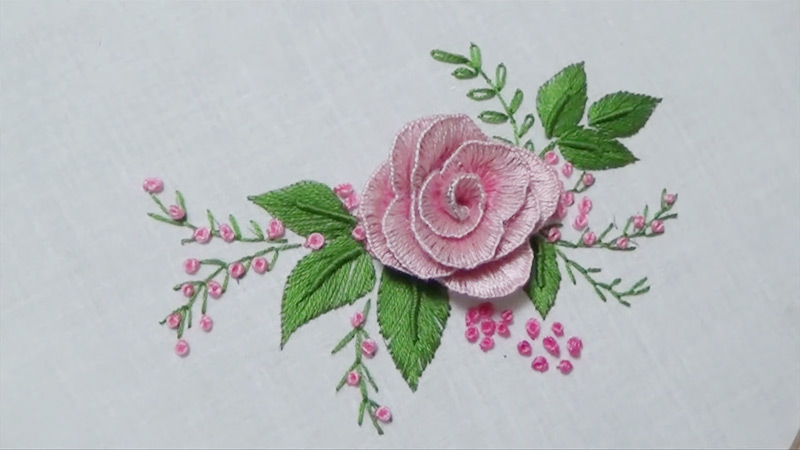
What Is Stumpwork Embroidery?
Stumpwork embroidery is a highly detailed and three-dimensional form of needlework that transforms flat fabric into intricate, lifelike designs.
Originating in the 17th century, it involves creating raised, sculptural elements on the fabric, often depicting flowers, insects, or other natural subjects.
In stumpwork, wires or threads are shaped and stitched onto the fabric to form the desired three-dimensional shapes, which are then carefully embellished with various embroidery stitches to add texture and detail.
This technique allows for a stunning level of realism and depth in embroidery, making the designs appear almost as if they could be plucked from the fabric.
Stumpwork is a challenging and time-intensive craft that rewards patience and skill with beautifully captivating results.
How Do You Do Stumpwork Embroidery? -8 Easy Steps
Stumpwork embroidery is a highly intricate and three-dimensional form of needlework that adds depth and texture to your embroidered creations.
It’s a fascinating and creative technique that allows you to create lifelike, raised elements on fabric, often resembling flowers, insects, or other natural subjects.
Here’s a step-by-step guide on how to do stumpwork embroidery:
Materials and Tools:
Before you start your stumpwork embroidery project, you’ll need the following materials and tools:
- Fabric
- Embroidery Hoop
- Embroidery Thread
- Needles
- Pliers
- Wire
- Stumpwork Patterns
Steps to Create Stumpwork Embroidery:
Step 1: Gathering Materials
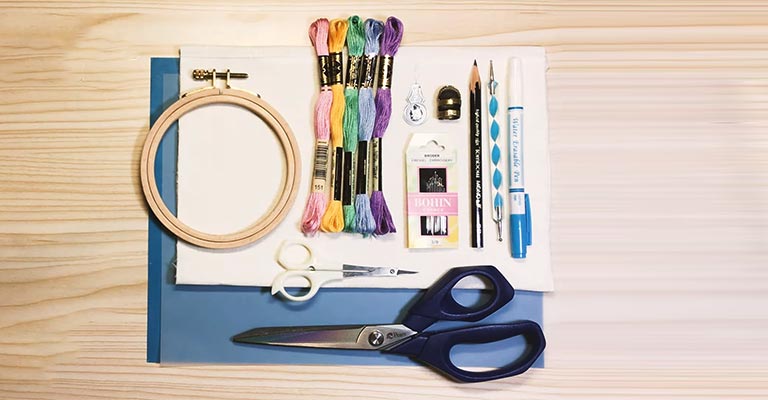
Begin by gathering all the necessary materials and tools for your stumpwork embroidery project. These include fabric, an embroidery hoop, embroidery thread, various needles, pliers, and fine-gauge wires.
Step 2: Preparing the Fabric
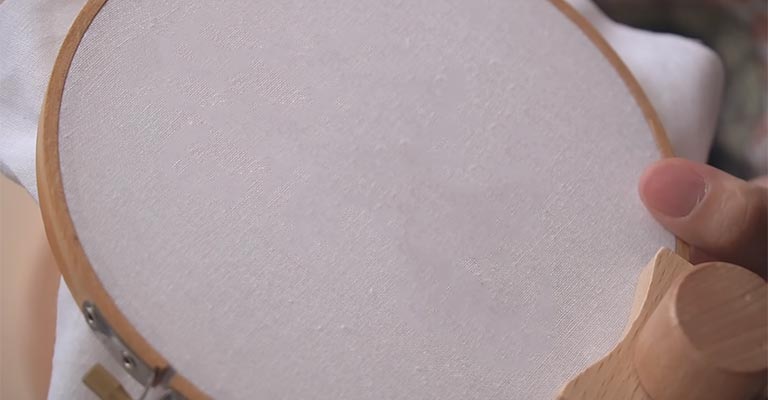
Place your chosen fabric in an embroidery hoop, ensuring it’s taut but not overly stretched. If you have a pattern in mind, transfer it to the fabric using a preferred method like a lightbox, transfer paper, or freehand drawing.
Step 3: Creating a Background
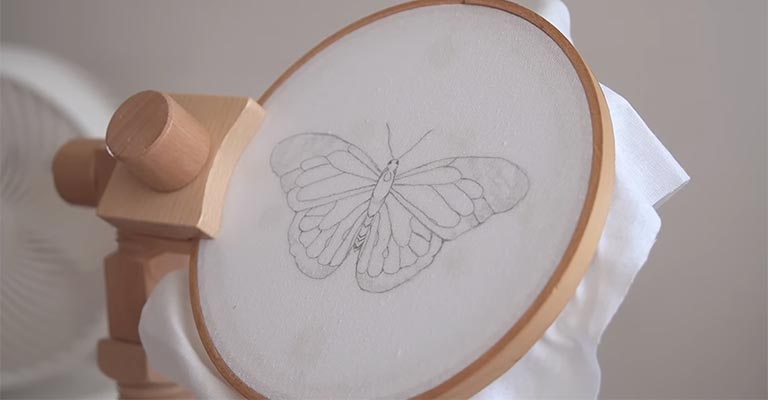
Start by creating the background or foundation for your design using basic embroidery stitches.
Common options include backstitch, stem stitch, and satin stitch. These stitches form the canvas upon which you’ll build your three-dimensional elements.
Step 4: Crafting Raised Elements
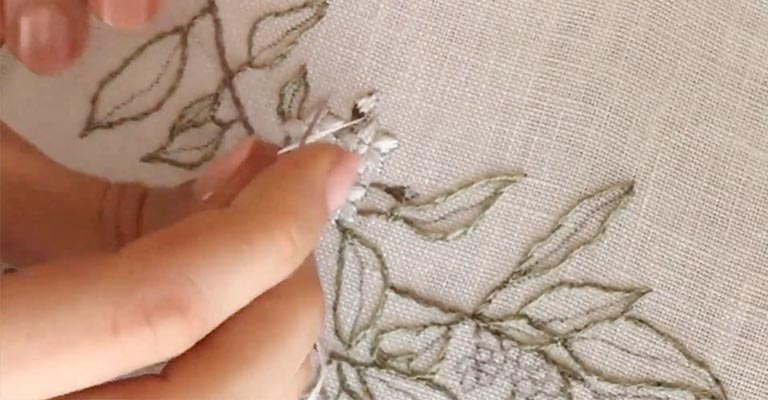
Determine which elements in your design will be made three-dimensional, such as petals, leaves, or insects.
Cut a suitable length of fine wire or thread and attach one end to the fabric through discreet stitches, leaving the other end open. Mold and shape the wire to resemble the desired form of your element.
Step 5: Adding Texture
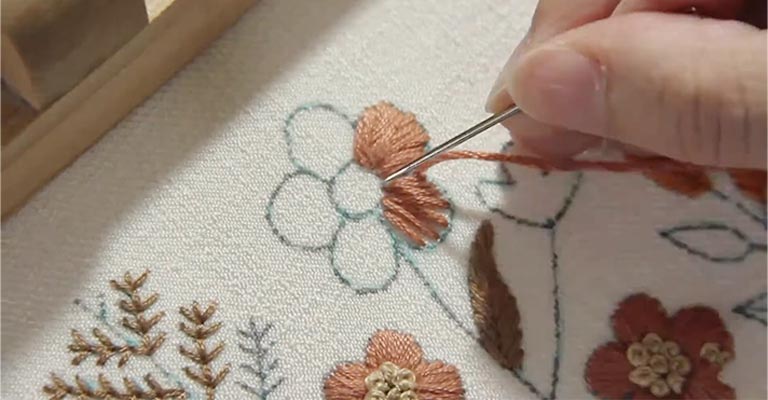
To lend a lifelike appearance to your raised elements, employ a variety of embroidery stitches.
Techniques like padded satin stitch, long and short stitch, and French knots are useful for covering the wire or thread and giving the element depth and texture.
Step 6: Securing Raised Elements
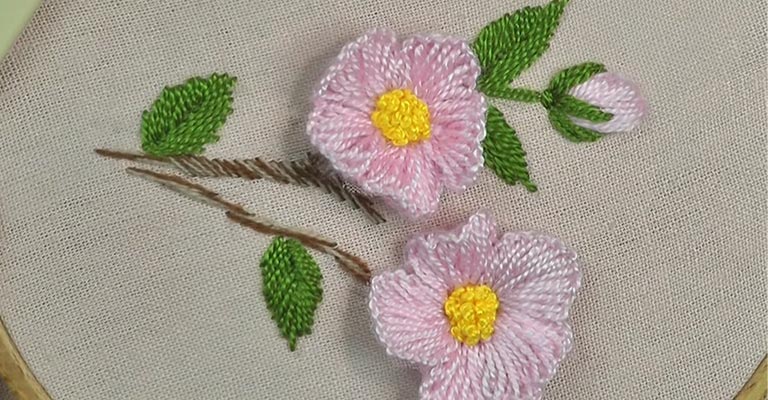
Secure the open end of the wire or thread to the fabric with concealed stitches beneath the raised element. Ensure that the element is firmly attached to the fabric.
Step 7: Blending and Detailing
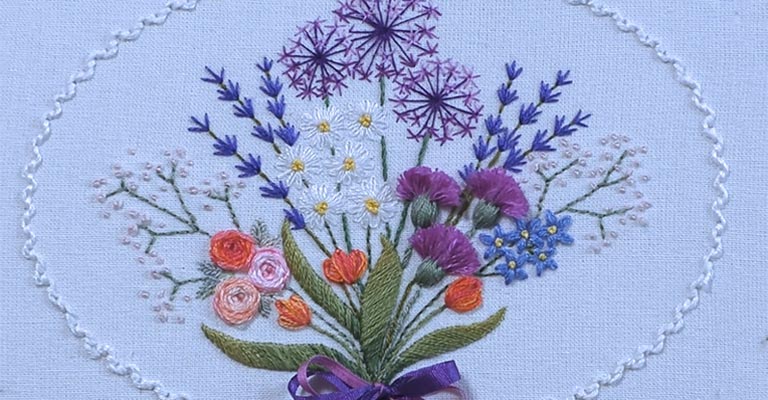
Continue to embroider the background and add any other necessary details around the raised elements. This is crucial to create a harmonious composition.
Step 8: Final Touches and Finishing

Once your design is complete, secure any loose ends and ensure your embroidery is neat and well-finished.
Take your time with this step, as the finishing touches can greatly enhance the overall appearance of your stumpwork embroidery.
Common Mistakes to Avoid in Stumpwork Embroidery
Stumpwork embroidery is a meticulous and intricate craft that requires patience and precision.
While it can result in stunning three-dimensional designs, there are common mistakes that embroiderers should be aware of to ensure their stumpwork projects turn out beautifully.
Here are the most common mistakes to avoid in stumpwork embroidery:
Pulling Wires or Threads Too Tightly
One of the most frequent errors is pulling the wires or threads too tightly, which can distort the shape of the raised elements and make them appear unnatural.
It’s essential to maintain a balance between securing the elements and allowing them to retain a lifelike appearance.
Using the Wrong Needle Size
Choosing the wrong needle size can affect the quality of your stitches and make it difficult to work with fine wires or threads. It’s important to select a needle that is appropriate for your chosen materials.
Neglecting to Secure Raised Elements Properly
If the raised elements are not securely attached to the fabric, they can come loose over time. To prevent this, make sure to anchor the wires or threads firmly and hide the attachment stitches beneath the element.
Overlooking Tension in Background Stitches
While the focus of stumpwork is often on the raised elements, the background stitches play a crucial role in the overall appearance. Inconsistent tension in the background stitches can lead to an uneven or messy backdrop.
Failing to Plan and Layer Properly
Stumpwork often involves multiple layers of raised elements. Neglecting to plan the sequence and placement of these layers can result in a cluttered or unbalanced design. It’s crucial to think ahead and layer elements thoughtfully.
Skipping Practice and Skill-Building
Stumpwork is a complex technique that benefits from practice and skill development. Skipping the basics and attempting intricate designs prematurely can lead to frustration and unsatisfactory results.
Not Paying Attention to Color and Texture
Stumpwork’s visual appeal relies on color and texture. Neglecting to use a variety of thread colors and different embroidery stitches to achieve realistic textures can lead to flat and uninteresting designs.
Losing Patience
Stumpwork embroidery is a slow and methodical process. Rushing through the work can result in mistakes and a lack of attention to detail. Patience is key to achieving the desired level of intricacy and realism.
Stumpwork Embroidery Patterns
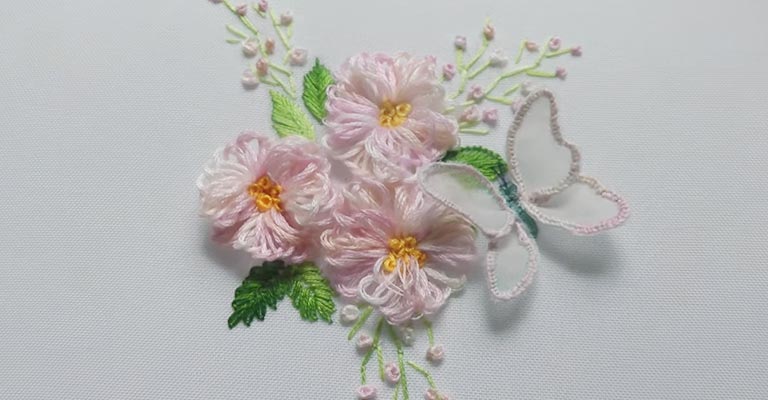
Stumpwork embroidery offers a wide range of creative possibilities, and there are numerous patterns available to help you get started on your stumpwork projects.
Here are some popular stumpwork embroidery patterns and themes:
Floral Patterns
Stumpwork is known for its exquisite floral designs. You can find patterns for three-dimensional flowers like roses, daffodils, lilies, and more.
These patterns often feature raised petals and leaves, making the flowers look incredibly lifelike.
Insects and Butterflies
Create intricate and realistic insects and butterflies in stumpwork. These patterns include detailed wings, antennae, and textured bodies, adding a touch of nature to your embroidery.
Fruit and Vegetables
Stumpwork patterns for fruits and vegetables, such as strawberries, pumpkins, or grapes, can make for delightful and whimsical projects. These designs often incorporate raised elements to mimic the textures of real produce.
Animals
You can find stumpwork patterns for various animals, from cute bumblebees and ladybugs to more complex creatures like birds or fish.
These designs allow you to experiment with different shapes and textures to create lifelike animals.
Botanical Gardens
Some stumpwork patterns offer scenes of lush botanical gardens with a combination of flowers, insects, and foliage. These complex designs can be very rewarding to complete.
Historical and Vintage Themes
Explore patterns inspired by historical and vintage embroidery styles. These patterns often include elements like elaborate costumes, architectural details, and period-appropriate motifs.
Fantasy and Mythical Creatures
Get creative with stumpwork patterns featuring fantasy creatures like dragons, fairies, and unicorns. These designs allow for a lot of artistic expression and imagination.
Seasonal and Holiday Patterns
For holidays and special occasions, you can find stumpwork patterns that match the season or celebration. These can include Christmas trees, Easter eggs, or Halloween motifs.
Landscape and Scenic Designs
Create landscapes and scenic views using stumpwork, with raised elements for hills, trees, and water features. These patterns require a high level of skill and attention to detail.
Alphabet and Monogram Patterns
Incorporate stumpwork elements into personalized embroidery projects by using alphabet and monogram patterns. You can add three-dimensional initials or names to your pieces.
FAQS
What is Stumpwork Embroidery?
Stumpwork embroidery is a specialized form of needlework that involves creating raised, three-dimensional elements on fabric, often depicting intricate and lifelike designs such as flowers, insects, or animals.
Is Stumpwork Embroidery Suitable for Beginners?
Stumpwork embroidery can be quite challenging and is often best attempted by those with some embroidery experience.
However, with dedication and practice, beginners can learn and master the techniques required for this art form.
Can Stumpwork Embroidery Patterns be Adapted or Customized?
Yes, stumpwork patterns can be adapted and customized to suit your preferences.
You can modify existing designs or create entirely unique pieces by adding your personal touch to the raised elements and background details.
Can stumpwork embroidery be combined with other embroidery techniques?
Stumpwork can indeed be combined with other techniques like silk shading, needle painting, and bead embroidery to create multidimensional, visually striking pieces.
To Recap
Stumpwork embroidery is a captivating and intricate art form that elevates traditional embroidery to a level of exquisite three-dimensionality.
It embodies the marriage of patience, precision, and creativity, where wires and threads transform flat fabric into lifelike, sculpted designs.
The allure of stumpwork lies in its meticulous attention to detail and the ability to create raised elements that seemingly come to life on the fabric canvas.
While it demands practice and skill development, the resulting textile artworks are nothing short of extraordinary.
With a blend of artistry, dedication, and reverence for the craft’s tradition, stumpwork embroidery enables artisans to create enchanting, multi-dimensional masterpieces that captivate the eye and touch the heart.
Leave a Reply